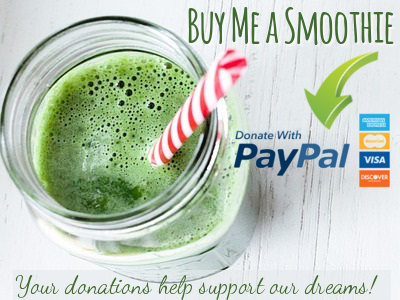Last updated on November 14th, 2019 at 04:30 pm
 Are you wondering what my triathlete dream has to do with choosing website shopping cart solutions?
Are you wondering what my triathlete dream has to do with choosing website shopping cart solutions?
Part of this dream journey of mine is to eventually teach women over the age of 40 how to become triathletes, even if they’ve never been a runner. And the second part of my big dream will involve online coaching and support. I want to be able to charge for my services!
As I put together my triathlete website, I began to think about web shopping carts, payment gateways and exactly how to take my offline fitness dream to the online world–with budding runners as clients who want to pay me for my expertise!
Let’s hear an “AMEN” to that!
When I was managing my web development company, I’d have clients call me with a sudden, urgent need for a payment gateway because they’ve awakened with a brilliant idea to sell products from their business website. I’d then need to set up a time with them to showcase the different e-commerce options available depending on how much they wanted to sell, what products or services they’d like to sell, the geographic locations they wanted to sell within, and whether they had discussed this new idea with their business banker.
Now that it’s my turn to consider a shopping cart, I find myself thinking: where in the $#@&^%!! do I start? Because I am already building my triathlon website, I’m going to skip discussing proprietary hosted e-commerce platforms like Bigcommerce, Etsy, Magento, Shopify, Volusion, and Wix. Just understand that they are package-hosted plans for a monthly fee where your online store resides.
Instead, I want to talk about standalone shopping cart solutions for the small entrepreneur who feels confident enough to manage their own e-commerce website. If your dream is to teach something online or sell a product you’ve created, then this article is probably for you.
4 Standalone Shopping Cart Solutions
1. PayPal
PayPal is a simple online payment service that allows individuals and businesses to transfer funds electronically. I hope that most everyone reading this is familiar with PayPal. PayPal’s Merchant Services division offers a convenient way for your online business to accept credit cards at your e-commerce store or with mobile payments.
Choosing PayPal as your shopping cart solution depends on the type of product you are planning to sell? If you only have a few simple products, or you are testing the waters by offering online training classes, and you already have an online presence with your website or blog, you may want to consider using PayPal for its ease-of-use and how easy it is to set up (and it comes with its own shopping cart).
Pros for Me: No additional upfront cost for a shopping cart, simple setup with minor changes needed to your website or blog, an easy way to accept credit cards or e-checks, online invoicing and recurring payments.
Cons for Me: Customer support leaves a lot to be desired. Charge-backs are pricey. Some people no longer trust PayPal for their online shopping.
2. Google Pay
If your demographic loves using their Smartphones to pay for purchases, then Google Pay might be just the thing for your online store, and long as what you are selling is pretty simple and appeals to the mobile user. Setting up Google Pay takes just a few lines of code on your website or blog, and you can be selling online in under a week.
Pros for Me: It’s a popular brand and widely used, but I don’t think it suits my demographic unless I’m live-coaching a triathlete across the country from me who is about to start a race and is buying coaching time through her phone.
Cons for Me: Your Google shopping cart customers must use either their debit or credit cards to make purchases on your website. There’s no PayPal or e-check option. Google shopping carts are only available in the US, so if I want to sell internationally, my potential customers cannot buy my service through Google Pay. No live customer service–just a forum and an email address–UGH!
3. Stripe
Stripe is fast becoming the most popular payment processor for online business. The company is known for making it easy for online business owners to accept payments online. Entrepreneurs love the subscription billing models and the ability to split payments. They now boast 24/7 customer service, which in the past has been one of the larger complaints merchants had about this interface.
Pros for Me: Good for digital good if I decide to brand water bottles or other digital products related to marathon running.
Cons for Me:I don’t feel this is the right fit for what I envision my coaching website to be for my clients.
4. WooCommerce
WooCommerce is an open-source e-commerce plugin for WordPress CMS. It is designed for small to large-sized online merchants using WordPress as their website, e-commerce store or blog. The payments processor part of this plugin interfaces with PayPal and Stripe already built-in as part of the interface so you would need to set up an account with either PayPal or Stripe.
Pros for Me: WooCommerce I can set up with any WordPress theme already installed on my website. I have a great understanding of WordPress, so this solution is easy for me to set-up and maintain. WooCommerce is known for being an excellent solution for selling online courses–something perfect for my training and healthy eating classes.
Cons for Me: I still have to set up and account with PayPal or Stripe.
What’s essential about taking your big dream online and selling a product or service to the public is that you thoroughly research all of the shopping cart solutions available. Write down your pros and cons as to what each offers you based on your web development expertise, your willingness to learn, your patience, and a price that will work with your launch.
You can start small and don’t choose an eCommerce solution that locks you into a plan for some time. Make sure what you decide to use is flexible and allows you the ability to change as your online business dream grows. You may even want to test a couple of them first to see which one works the best with what you are trying to sell.

Are you a woman looking to become an athlete after the age of 40? Check out my articles on Dreaming How to Get Fit After Age 40 where you will find my stories of how I became a triathlete after age 40 and my tips for improving your health and fitness–I lost 100+ pounds! If I can do it–you can too!
Heather Montgomery
Disclaimer: Any opinions expressed are my own, and opinions are based solely on my experience with various shopping cart software products.
 |  |  |

Heather Montgomery is a fitness writer, triathlete, and serial entrepreneur who is devoted to sharing what she has learned about becoming a triathlete after age 40. She uses her Metabolic Training Certification to help other women struggling to get fit in mid-life. She lives and trains in Santa Rosa, California, the new home of the Ironman triathlon. You can find her biking the Sonoma County wine trails.
Note: Articles by Heather may contain affiliate links and will be compensated if you make a purchase after clicking on an affiliate link.





